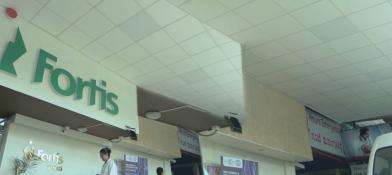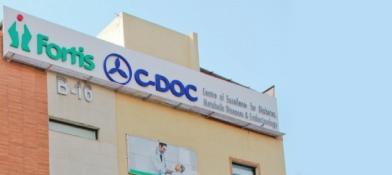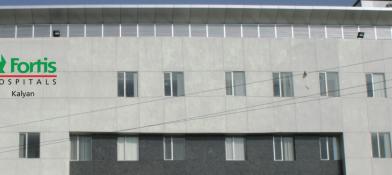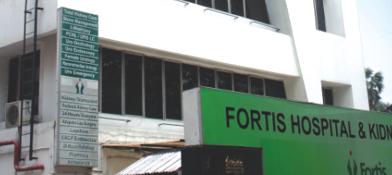Bone Scan: A Detailed Guide to Nuclear Medicine Imaging
A bone scan is a specialized diagnostic imaging procedure in the field of nuclear medicine that provides a detailed functional picture of your entire skeleton. Unlike standard X-rays or CT scans which primarily show the anatomical structure of the bones, a bone scan is designed to detect areas of abnormal metabolic activity within the bone. This is achieved by using a small, safe amount of a radioactive substance, called a radiotracer, which is injected into the bloodstream.
This tracer naturally travels to and is absorbed by bone tissue, accumulating in areas where bone is actively breaking down or rebuilding. A special gamma camera is then used to detect the energy emitted by the tracer, creating a map of your skeleton that highlights these areas of increased activity, often referred to as "hot spots."
This ability to visualize bone physiology makes the bone scan an incredibly sensitive tool for detecting a wide range of abnormalities long before they might be visible on other types of imaging. It is most commonly used in oncology to determine if a cancer has spread (metastasized) to the bones. However, it is also an invaluable tool for diagnosing subtle or hidden fractures, detecting bone infections (osteomyelitis), and evaluating various other bone diseases. The procedure is safe, generally painless, and provides crucial information that helps your doctor make an accurate diagnosis and formulate the most effective treatment plan.
The Science: How a Bone Scan Works
The bone scan is a cornerstone of functional imaging, providing insights into the biological processes happening within your bones. The technology relies on a radiotracer, a special camera, and the fundamental principle of bone metabolism.
The Radiotracer: A "Smart" Imaging Agent
The radiotracer used in a bone scan consists of two key components:
- A Radionuclide: This is a radioactive isotope, most commonly Technetium-99m (Tc-99m). This isotope is chosen for its ideal properties: it emits detectable gamma rays and has a short half-life of about six hours, meaning it decays quickly and is eliminated from the body within a day or two.
- A Pharmaceutical: This is a phosphate-based compound, such as Medronate (MDP). Phosphate compounds are naturally involved in bone formation and are readily taken up by bone-building cells.
Think of the pharmaceutical (MDP) as a "delivery truck" that is specifically designed to go to areas of active bone construction. The radionuclide (Tc-99m) is a "GPS tracker" attached to the truck. When this radiotracer is injected into your bloodstream, it circulates throughout your body, and the phosphate "trucks" deliver the radioactive "trackers" to the sites where your bones are most active.
The Principle of Osteoblastic Activity
Bone is a living, dynamic tissue that is constantly remodeling itself. Cells called osteoclasts break down old bone, and cells called osteoblasts build new bone. A bone scan works by highlighting areas of increased osteoblastic activity. Any process that injures or affects the bone—be it a fracture, an infection, arthritis, or a tumor—will trigger a healing or reactive response, which involves a significant increase in the activity of these bone-building osteoblast cells. These highly active areas will therefore attract and accumulate a larger amount of the radiotracer.
The Gamma Camera
A gamma camera is a specialized device designed to detect the gamma rays being emitted from the Tc-99m that has accumulated in your bones. It does not produce any radiation itself; it only detects the low-level energy coming from your body after the injection. The camera's detector processes these signals and, with the help of a computer, generates a two-dimensional image of your entire skeleton, called a scintigram. The areas with higher accumulation of the tracer appear as darker spots or "hot spots" on the final image.
When is a Bone Scan Recommended?
A bone scan is an exceptionally sensitive test and is ordered for a variety of clinical reasons when a detailed assessment of bone metabolism is needed.
Primary Use: Cancer Staging and Monitoring
- Detecting Bone Metastases: This is the most common indication for a bone scan. Many cancers have a propensity to spread to the bones, including breast cancer, prostate cancer, lung cancer, and kidney cancer. A whole-body bone scan is a standard part of the staging process for these cancers to determine if metastasis has occurred.
- Monitoring Treatment Response: Bone scans can be used to assess how well bone metastases are responding to treatments like chemotherapy or radiation therapy.
- Evaluating Primary Bone Cancer: While less common, it can be part of the workup for primary bone tumors.
Diagnosing Fractures
- Detecting Occult or Subtle Fractures: A bone scan can detect tiny fractures that may not be visible on a standard X-ray, such as stress fractures in athletes or soldiers, or subtle hip fractures in elderly patients with osteoporosis.
- Determining the Age of a Fracture: It can help determine if a fracture seen on an X-ray is new or old, which can be important in certain clinical situations.
Diagnosing Bone Infections and Inflammation
- Osteomyelitis: A bone scan is highly sensitive for detecting bone infections. It can identify the location of the infection, which is particularly useful in complex cases like diabetic foot infections.
- Assessing Arthritis: It can show the extent of inflammation in the joints caused by various forms of arthritis, although it is not typically the primary imaging tool for this purpose.
Investigating Unexplained Bone Pain
When a patient has persistent bone pain but X-rays and other initial tests are normal, a bone scan can often identify the underlying cause, such as a hidden fracture, infection, or another bone pathology.
Evaluating Metabolic Bone Diseases
- Paget's Disease of Bone: This is a chronic condition that causes abnormal bone remodeling. A bone scan is the best imaging modality to show the extent and activity of the disease throughout the skeleton.
Interpreting Your Results: Hot Spots and Cold Spots
The report from your bone scan will be interpreted by a nuclear medicine physician, who will correlate the findings with your medical history.
Understanding "Hot Spots"
A "hot spot" is an area on the scan that appears darker, indicating a higher concentration of the radiotracer and increased bone metabolism. It is crucial to understand that a hot spot is non-specific. It indicates an area of bone reaction but does not, by itself, tell you the cause. Hot spots can be caused by:
- Cancer that has spread to the bone (metastasis).
- A primary bone tumor.
- A recent or healing fracture.
- A bone infection (osteomyelitis).
- Arthritis.
- Paget's disease.
Because of this, the nuclear medicine specialist will always interpret the scan in the context of your clinical history and other imaging studies (like X-rays or CT scans) to arrive at the most accurate diagnosis. Sometimes, a "hot spot" may require a biopsy to determine its exact cause.
Understanding "Cold Spots"
Less commonly, an area on the scan may show decreased or absent uptake of the tracer, appearing as a "cold spot." This indicates a lack of blood supply to the bone or the absence of metabolic activity. Cold spots can be caused by:
- Certain types of cancer that destroy bone without prompting a strong rebuilding response (e.g., multiple myeloma).
- Avascular necrosis (death of bone tissue due to a loss of blood supply).
- A bone cyst.
Our Specialists
The bone scan procedure and its interpretation are managed by a dedicated team of nuclear medicine physicians, who work closely with oncologists, orthopedic surgeons, and other specialists.
Dr. Vikas Dua
PRINCIPAL DIRECTOR & HEAD - PEDIATRIC HEMATOLOGY, HEMATO ONCOLOGY & BONE MARROW TRANSPLANT | Fortis Gurgaon
Dr. Vedant Kabra
PRINCIPAL DIRECTOR SURGICAL ONCOLOGY | Fortis Gurgaon
Dr. Mohit Agarwal
PRINCIPAL DIRECTOR & HEAD MEDICAL ONCOLOGY | Fortis Shalimar Bagh
Patient Stories
“When I was diagnosed with prostate cancer, my oncologist recommended a bone scan as part of the initial staging to make sure the cancer hadn't spread. The idea of a 'nuclear' test was a bit unnerving, but the staff explained everything so clearly. The injection was just like a normal blood test, and the scan itself was completely open and painless. Waiting for the results was the hardest part. Receiving the news that the scan was clear—that there was no evidence of spread to my bones—was an incredible relief. It was a critical piece of information that allowed us to proceed with a curative treatment plan for my primary cancer”. — K. Narayanan, 68, Delhi
“As a long-distance runner, I developed a nagging, deep pain in my shin that wouldn't go away. Multiple X-rays showed nothing, but I couldn't run without pain. My sports medicine doctor ordered a bone scan. The scan lit up with a clear 'hot spot' right on my tibia, confirming a stress fracture that was invisible on the X-rays. While it meant I had to take a break from running, having a definitive diagnosis was so important. It explained my pain and allowed my doctor and physio to create a proper recovery plan to get me back on the road safely.” — A. Singh, 27, Gurugram.
The Bone Scan Procedure: A Detailed Walkthrough
The bone scan is a two-part procedure with a waiting period in between. You should plan to be at the hospital for several hours in total.
Preparation for the Procedure
- There is usually no need to fast. You can eat and drink normally unless instructed otherwise.
- Wear comfortable clothing without metal fasteners.
- You must inform the doctor and the technician if there is any possibility that you are pregnant or if you are breastfeeding.
- It is very important to drink several glasses of water in the time between the injection and the scan.
Part 1: The Injection
- You will be taken to an injection room.
- A small amount of the radiotracer (Tc-99m MDP) will be injected into a vein in your arm. The injection feels the same as a standard blood draw and has no immediate side effects.
The Waiting Period (2 to 4 Hours)
- After the injection, you will be free to leave the department. You will be given a specific time to return for your scan.
- This waiting period is essential to allow the radiotracer to circulate throughout your body and be absorbed by your bones.
- During this time, you will be strongly encouraged to drink plenty of water (usually 4-6 glasses). This helps to flush out the tracer that has not been taken up by the bones, resulting in clearer images.
Part 2: The Scan
- You will return to the nuclear medicine department at your scheduled time and will be asked to empty your bladder right before the scan.
- You will lie down on a scanning table.
- A large imaging device, the gamma camera, will be positioned above and/or below you. The camera is open and does not make loud noises, so the experience is not claustrophobic like an MRI.
- The camera will move slowly over your body, capturing images. It is very important that you remain as still as possible during the scan to ensure the images are not blurry.
- The scan itself typically takes about 30 to 60 minutes.
After the Procedure
You can resume all normal activities and your regular diet immediately after the scan. The small amount of radioactivity from the tracer will be naturally eliminated from your body, mostly through your urine, within 24 to 48 hours. Drinking extra fluids for a day or two can help speed up this process.
Myths vs Facts
Take the Next Step
A bone scan is a powerful diagnostic tool that plays a vital role in modern medicine, particularly in the fields of oncology and orthopedics. By providing a functional map of the entire skeleton, it offers unique insights that can lead to an early and accurate diagnosis, guide treatment decisions, and monitor your response to therapy.
If your doctor has recommended a bone scan, it is because they believe it is the best way to get the comprehensive information needed to manage your health. Our team of nuclear medicine specialists is dedicated to ensuring your procedure is performed with the highest standards of safety, technology, and patient care.
CTA: Consult a Nuclear Medicine Specialist / Get a Second Opinion
Frequently Asked Questions
Q1. How long does the entire bone scan process take?
Ans. You should plan for a total time of about 4 to 5 hours. This includes the initial injection, the 2 to 4-hour waiting period, and the 30 to 60-minute scan itself.
Q2. Is the procedure painful?
Ans. The only discomfort is the brief needle prick from the initial injection, which is similar to a blood test. The scan itself is completely painless.
Q3. Are there any side effects from the radiotracer injection?
Ans. Allergic reactions to the radiotracer are extremely rare. The injection does not cause any feelings of warmth, flushing, or nausea.
Q4. What is a three-phase bone scan?
Ans. A three-phase bone scan is a more detailed version of the test often used to diagnose bone infections (osteomyelitis) or complex fractures. It involves taking images immediately after the injection to look at blood flow (flow phase), then again after a few minutes to look at blood pooling (blood pool phase), and finally the standard delayed images after 2-4 hours.
Q5. Do I need to take any special precautions with my family after the scan?
Ans. The amount of radiation is very low. As a general precaution, you might be advised to avoid very prolonged, close contact with pregnant women or very young children for the first 24 hours, but normal daily interactions are perfectly safe.
Q6. Can I have a bone scan if I am pregnant or breastfeeding?
Ans. Bone scans are generally not performed on pregnant women unless absolutely necessary. If you are breastfeeding, you will be given special instructions, which usually involve temporarily stopping breastfeeding and discarding your breast milk for a short period (typically 24 hours) after the injection.
Q7. How long will it take to get my results?
Ans. A nuclear medicine physician needs to carefully interpret the images. A formal report is usually sent to your referring doctor within one to two business days.
Q8. What happens if my bone scan shows an abnormality?
Ans. The bone scan will identify an area of concern. Depending on the finding and your clinical situation, your doctor may order further imaging tests, such as a targeted MRI or CT scan, or in some cases, a biopsy of the abnormal area to get a definitive diagnosis.




































